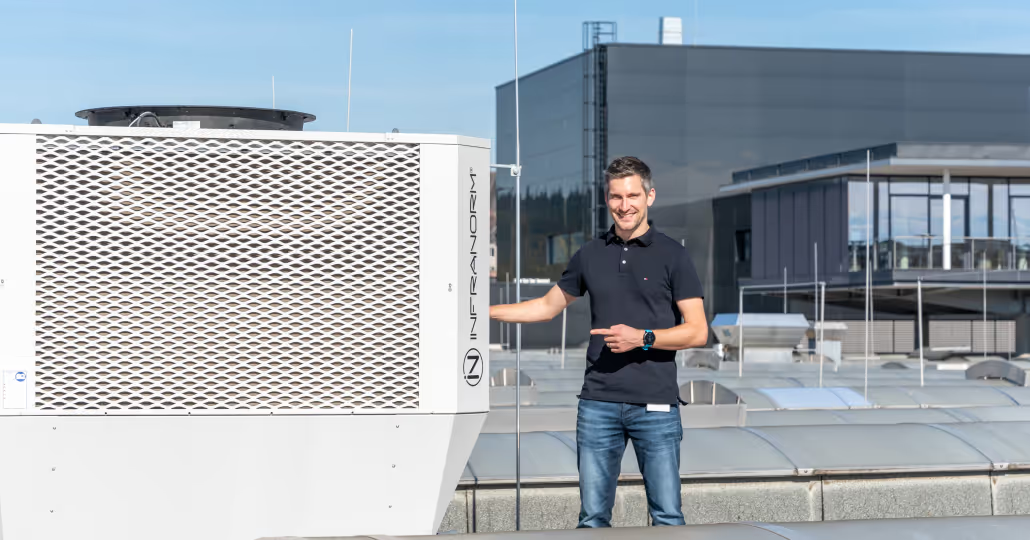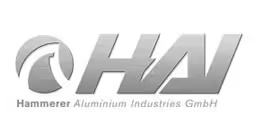Adiabatic cooling: evaporative cooling
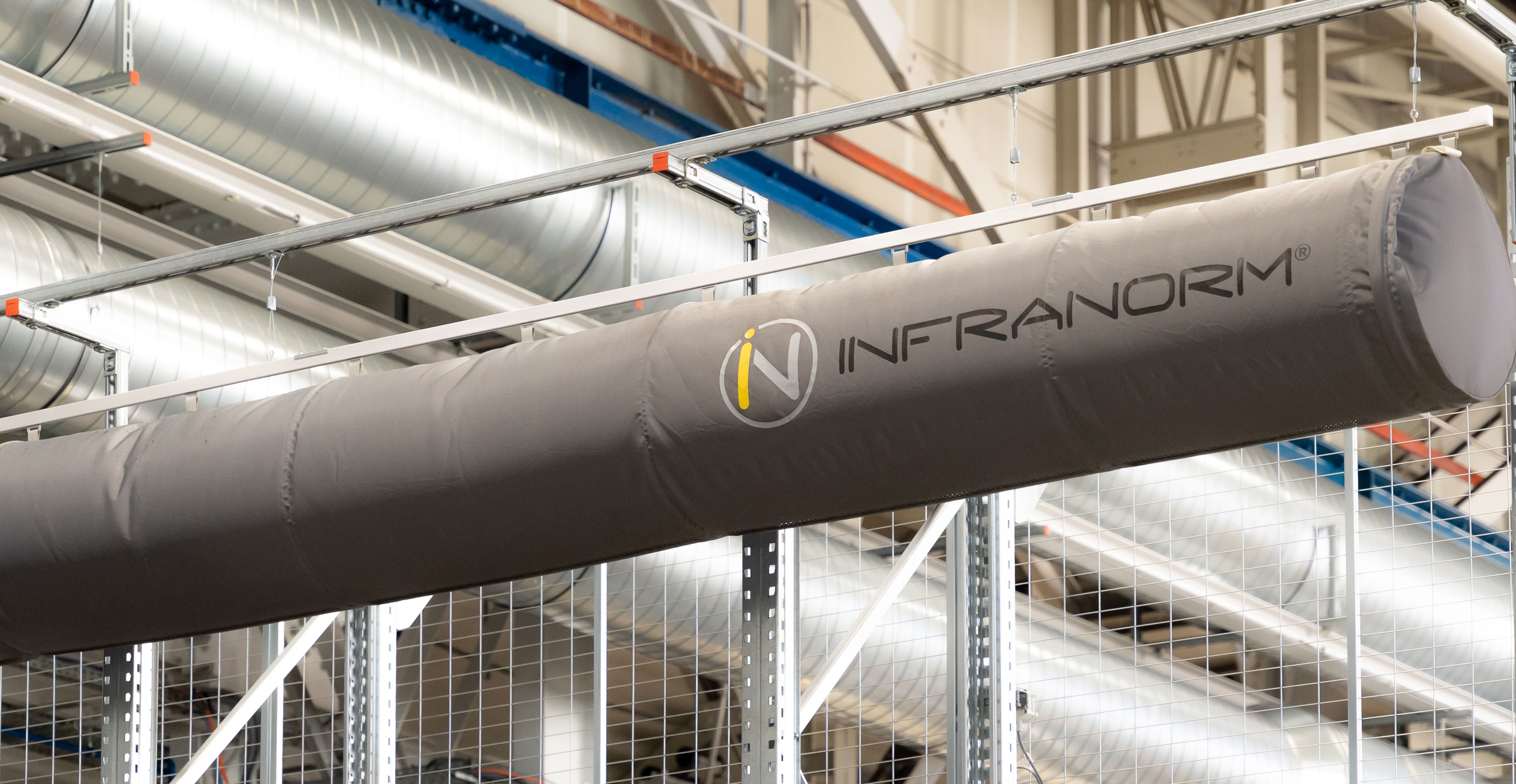
Die adiabatic cooling, also as evaporative cooling known, uses a simple but effective physical principle: the evaporation of water to remove heat from the surrounding air and cool it. This process is extremely energy efficient and completely dispenses with climate-damaging refrigerants such as F-gases or PFAS. INFRANORM® Does this technology with Sustainable Hall Conditioning (SHC) revolutionized and with two-stage brought to the next level. As a result, the known disadvantages (high humidity, low output) are finally eliminated.
Key facts about adiabatic cooling
- Die adiabatic cooling utilizes Water as refrigerant , which means that it completely dispenses with climate-damaging F-gases or PFAS.
- It is the ideal solution for Air conditioning of industrial and production halls with the highest requirements for stable temperatures.
- With the two-stage adiabatic cooling From INFRANORM®, you have up to 95% lower cooling costs and 95% less CO2 emissions against compression cold.
- Thanks to superior performance, SHC technology achieves 19 °C supply air With extremes 37 °C outdoor temperatures, without expensive energy.
- It provides for up to 60% lower moisture input and the ability to cool the supply air below the wet-bulb temperature.
- Thanks to permanent antibacterial coating, the system is VDI 6022 certified and uses a patented 3D honeycomb structure that enables self-cleaning.
What is adiabatic cooling?
Adiabatic cooling, often referred to as evaporative cooling, is an energy-efficient method for air-conditioning buildings and industrial environments. It uses a law of nature that unleashes revolutionary potential in industry: the evaporation effect. This process completely dispenses with climate-damaging refrigerants such as F-gases or PFAS.
There are two main processes: the conventional single-stage Method and the innovative two-stage method.
Difference between single-stage and two-stage adiabatic cooling
The key difference between single-stage and two-stage adiabatic cooling lies in the type of air treatment. With single-stage cooling, the air is cooled directly — this often results in high humidity and sub-optimal cooling capacity. The result is tropical climate, limited output and increased Maintenance risks.
It starts right here INFRANORM® Disruption. We have the adiabatic cooling with our two-stage adiabatic cooling and Sustainable Hall Conditioning (SHC) taken to the next level. This double treatment maximizes cooling capacity and creates a noticeably better indoor climate. Overall, two-stage cooling is not only more efficient, but also more powerful than conventional single-stage cooling and the moisture input is increased by up to 60% reduced.
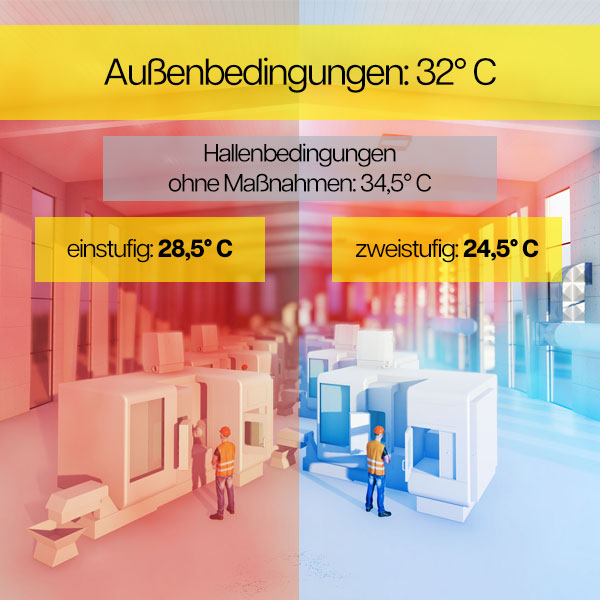
How does two-stage adiabatic cooling work?
The patented two-stage process makes it possible to cool the supply air below the wet-bulb temperature.
- The cooling process: First is the Pre-cooling the air by means of an air-water heat exchanger and then the adiabatic cooling with water, which allows us to achieve a lower delivery temperature.
- Outcome: This not only results in a higher cooling capacity, but also in one up to 60% lower moisture input.
With our revolutionary Sustainable Hall Conditioning We are breaking through the physical limits of existing cooling systems in production halls and setting new standards.
What savings potential can be achieved through adiabatic cooling?
With Sustainable Hall Conditioning (SHC) and the two-stage adiabatic cooling achieve a Cost reduction of over 90% compared to conventional chillers. The cost savings are due to both acquisition and reduced operating costs.
The example below demonstrates the economic efficiency. Die internal heat load of 162 kW For this reference project — the most important indicator of cooling demand — highlights the challenge. Without SHC, a conventional chiller with 397 kW thermal output required. *
*Please note that the exact calculation depends on numerous parameters (weather data location, electricity price...). Feel free to contact us for an individual potential check!
The direct comparison of costs and CO2 (facts from the simulation)
Patented aluminum fins in adiabatic cooling
The revolutionary performance of two-stage adiabatic cooling is made possible by our patented material technology.
INFRANORM® Breaks with conventional cellulose-based systems and builds up in cooling systems Aluminum slats with a revolutionary 3D honeycomb structure.
The benefits that result from this are:
- efficiency: This breakthrough technology enables effective surface evaporation with minimal pressure loss.
- Maintenance-free: Thanks to the special structure Our system cleans itself.
- Cost advantage: They can normal tap water use expensive treated water instead of expensive water.
- Long service life: You will receive a maximum service life of up to 5 years.
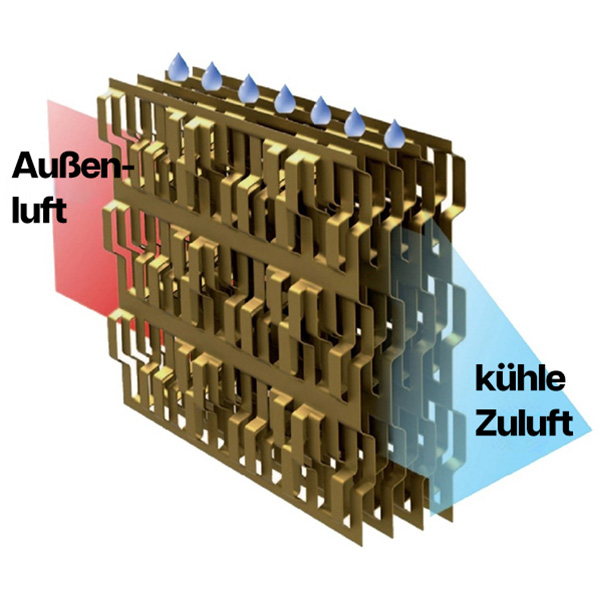
How does INFRANORM® guarantee maximum hygiene during adiabatic cooling?
Hygiene guarantee: VDI 6022 certification
In the past, there have been some hygiene challenges associated with adiabatic cooling. But today? Not a problem anymore! We've made a significant breakthrough.
Our adiabatic cooling meets the highest hygiene standards for ventilation systems, certified according to VDI 6022.
- Permanent coating: We rely on a permanent antibacterial coating with the Biomaster certificate.
- Drying program: We also run a daily drying program with an impressive Bioshock effect through.
- proof: Successful projects in the food industry serve as proof of our innovative solution.
conclusion
In this article, we have shown that the adiabatic cooling is the sustainable and economic future of hall conditioning. Where conventional, single-stage technology fails at the limits of moisture, the two-stage SHC technology The solution from INFRANORM®. It reduces your operating costs by up to 95% and eliminates the typical problems of moisture and lack of performance.
INFRANORM®: Your experts for two-stage cooling
As rebellious game changers We think differently so you can produce better. We have received several awards for our disruptive solutions and implement plant engineering across Europe, with a focus on markets such as Austria, Germany and the Switzerland. INFRANORM® Technologie GmbH, headquartered in Wels, Austria, is your experienced partner. Numerous renowned customers from industries such as heavy industry, food production and high-tech manufacturing rely on our tailor-made concepts.
In short: We offer you not just a system, but a system solution, which combines economy and ecology and gives you Optimally clean & tempered indoor air for 365 days guaranteed.
FAQ
What are the advantages of adiabatic cooling, particularly in industry?
Adiabatic cooling is the ideal solution for industrial environments as it is more cost-effective and up to 95% less energy consumed as conventional air conditioners. This creates a pleasant working environment for employees and protects machines from overheating. The approach is also sustained because it uses the natural principle of water evaporation and avoids harmful chemicals.
For which industries is adiabatic cooling particularly relevant?
Adiabatic cooling is designed to air condition a wide range of commercial buildings that require stable conditions. Typical areas of application in industry include production halls, logistics centers and workshops. It is used in heavy industry and the steel industry as well as in food processing (e.g. milk processing, beverage production). The technology is also relevant for the packaging industry and the cooling of technology and machines (for example in plastics processing).
What are the disadvantages of adiabatic cooling and how can they be addressed?
The main disadvantages of adiabatic cooling usually lie in single-stage systems:
- Increased humidity: Conventional systems significantly increase the humidity in the room, which leads to the dreaded tropical climate.
- Useless temperatures: Especially at high outdoor temperatures, single-stage systems with temperatures up to 7°C higher than the two-stage system for overheated halls
- Hygiene: Due to the use of mostly organic cooling honeycombs, there are increased hygiene risks
The solution with INFRANORM®: Two-stage adiabatic cooling in Sustainable Hall Conditioning (SHC) eliminates these disadvantages. We reduce moisture input by up to 60% and guarantee the highest hygiene standards and significantly lower maintenance costs thanks to our patented, self-cleaning cooling honeycomb and VDI 6022 certification. The cooling of 37°C outdoor air to a pleasantly cool 19°C supply air enables efficient cooling of the hall, where single-stage systems at 26°C are unable to prevent overheating here
How does single-stage adiabatic cooling work?
The mechanism is extremely simple and physically effective. It is based on the fact that evaporation of water energy is required. This necessary energy is extracted from the ambient air — the air cools down.
Imagine the principle like that sweating on the skin: When sweat evaporates, it leaves an immediate, cooling effect. Adiabatic cooling makes use of this effect in a technical process.
The process consists of three steps:
- Evaporation: Water is spread over a surface and starts to evaporate.
- Energy deprivation: Evaporation requires thermal energy, which is extracted from the ambient air.
- Temperature reduction: The resulting evaporated air is brought into the hall in a cooled state.


